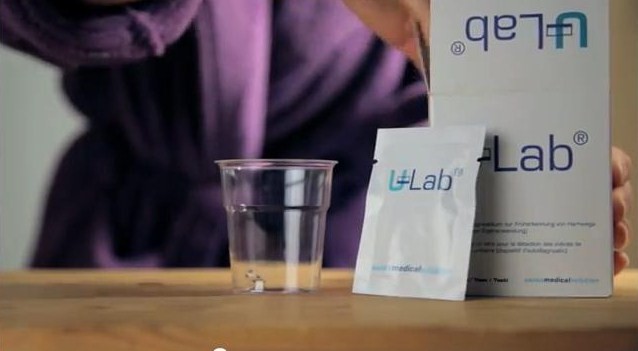U-Lab is the first diagnostic test for an early detection of urinary tract infection.It has been developed for use by the patients. Urinary tract begins with the kidneys, the ureters which are the tubes that go into the bladder and then the opening called urethra. Bacteria usually enters through the urethra. Nearly 40% of women develop a urinary tract infection at least once in their lifetime and about 80-90% of them will be affected a second time. About 5-10% of women suffer from recurrent UTI’s. So this U-Lab is very important for women with recurrent UTI’s.

a. General guidelines
1. The first and the foremost thing that needs to be checked is the expiration date. Dont ever use the expired test kit as the results can be highly inaccurate.
2. This kit needs to be stored in some cool place otherwise the chemicals may expire before the expiry date.
3. Read the instructions that come with the test kit and follow the exact directions and guidelines without skipping any of them.
4. Keep the written record of the tests to show them to your doctor and for the future reference.
5. These tests shold always be done in supervision of a doctor.
b. Performing the test
Test Kit:
The UTI equipment consists of a clean cup for collecting the urine. It also contains the test card which has the reference card printed on it to interpret the colour reaction. U-Lab is the first marketed product and a registered trademark. It has been certified by EU as IVD (in-vitro diagnostic, CE mark), authentication in other markets are planned. U-Lab is a self test for home diagnosis of UTI mainly for females, who recurrently suffer from that condition. It shows the presence of nitrite as well as white blood cells in urine, in line with the international guidelines. U-Lab detects the first symptoms of a urinary tract infection in your urine before pain and discomfort appear.
U-Lab identifies Nitrite (bacteria) and Leukocytes (white blood cells) and gives you an early enough warning, especially those at risk in the following categories:
- Sexually active women
- Pregnant women
- Women suffering from frequent, recurrent urinary tract infections
- Postmenopausal women
- Women with obstructions
- Diabetic women
- Women with catheters
- Women undergoing gynaecologic or urologic surgery
c. Test procedure
The U-Lab test is non invasive(i.e there is no puncture or incision) and is very easy to use. Wash your hands properly before beginning the test. First of all, remove the plastic container from the package for collecting the urine. See to it that the hands and the genitals do not touch the inner surface of the container. Collecting the first morning urine is recommended as it will most likely give the most accurate results. Care should be taken to ensure the prevention of stool, blood of menses, pubic hair, toilet paper or any other foreign material into the urine sample.
Bring out the test card and put it in the urine in the first 15 minutes of collecting urine sample. Take the test card out after 5 minutes and compare the colour reaction in the test chamber with the reference colour chart printed on the card. Even though the colour changes are already visible after two to three minutes, but the test results are definitive after 5 minutes.The colour reaction for white blood cells (Leukocytes) and Nitrite remains stable for 24 hours. 
d.Test results
The test card has three chambers. One chamber is for Nitrite, one is for Leukocytes and the third one for the sample detection. In the event of a possible pathological finding ( positive test), a colour reaction occurs in the respective test area.
e.Test interpretation
1. Normal: The results of the test are normal if the nitrite and the leucocyte value is found to be negative. This means the urine has no or negligile content of nitrite and leucocyte present in it.
2. Abnormal: If the nitrite and leucocyte value is found to be positive, then the results are abnormal. This means that there is a significant content of nitrite and white blood cells (leucocytes) present in the urine.
3. Non Valid: If the test is non valid, it indicates that there was not enough urine in the chamber. So, in that case the test should be repeated with an adequate quantity of urine.
If there arises any sort of doubt concerning the test, then the test should be repeated next day again with the first morning urine.




